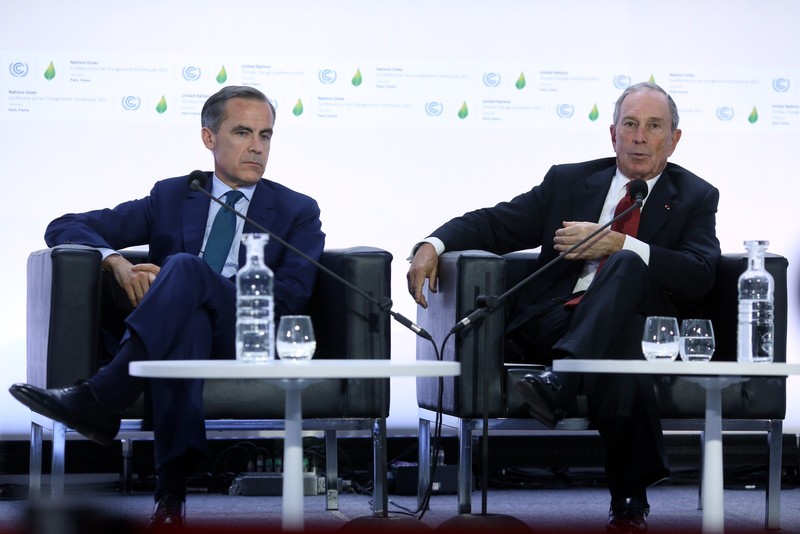Deciphering the Task Force on Climate-related Financial Disclosures (TCFD)
Climate change not only poses serious threats to communities in the form of natural disasters such as catastrophic floods, droughts and storms, but it also impacts businesses operating in the affected communities. Companies around the world, and in nearly every sector, are increasingly acknowledging that climate change presents significant risks to the economy, while battling climate change may bring new opportunities for growth as well.
Given that climate change is not only an environmental problem but a business one as well, the Financial Stability Board (FSB) formed the Task Force on Climate-related Financial Disclosures (TCFD) in December 2015 to address the impact climate change is having on companies and the global financial system through disclosure. Spearheaded by FSB Chairman and Bank of England Governor Mark Carney and chaired by Michael Bloomberg, in 2017 the Task Force issued recommendations aimed at helping companies disclose decision-useful information which will enable financial markets to better understand climate-related financial risks and opportunities. The voluntary recommendations are designed to help companies identify and disclose the potential financial impacts of climate-related risks and opportunities on their businesses, which in turn will help lenders, insurers and investors better assess and price those risks and opportunities. Ultimately, this disclosure can help drive capital towards sustainable investments, building a resilient economy.

The mission
The Task Force spent 18 months developing its recommendations which transcend sectors and jurisdictions. They are structured around four thematic areas that represent core elements of how organizations operate. The recommendations call for companies to disclose:
- Governance: their governance around climate-related risks and opportunities.
- Strategy: the actual and potential impacts of climate-related risks and opportunities on the organization’s businesses, strategy and financial planning where such information is material.
- Risk Management: how the organization identifies, assesses and manages climate-related risks.
- Metrics and Targets: the metrics and targets used to assess and manage relevant climate-related risks and opportunities, where such information is material
The Task Force’s recommendations have been widely supported by industry leaders. As of April 2018, more than 275 companies, with a combined market capitalization of more than $6.6 trillion, have publicly expressed support for the TCFD recommendations. The companies include more than 160 financial firms — responsible for assets of over $86.2 trillion.
Bloomberg LP has integrated for the first time TCFD disclosures into its annual 2017 Impact Report, which was released April 11, 2018. Bloomberg LP’s climate-related governance, strategy and risk management processes can be found in the Approach section of the report.
The background
The driving force behind the TCFD has been the FSB, an international body that monitors and makes recommendations to promote a stable international financial system. As FSB chairman, Mark Carney established the Task Force in 2015 in response to a request from the G20 to better understand the financial risks posed by climate change. Carney appointed Michael Bloomberg, who has been a vocal advocate for tackling climate change and who serves as the U.N. Special Envoy for Climate Action, to chair the industry-led TCFD.
The 32 Task Force members were chosen by the FSB to include users and preparers of disclosures from across the G20, covering a range of economic sectors and financial markets. The Task Force released a draft report for public comment in late 2016 and unveiled its final report in June 2017. Since then, it has been working on adoption and implementation initiatives to ensure uptake of the recommendations. The Task Force is also working on increasing support for its work across a range of companies, financial institutions and other stakeholders.
Why this is important
As the risks related to climate change come further into focus, investors are increasingly asking how those risks will impact financial performance — for better or for worse — over the long run. One of the primary functions of the TCFD is to help answer those questions for all stakeholders in the global financial system by providing consistent and comparable guidelines for disclosures. Identifying climate challenges (and associated opportunities) and disclosing preparedness to handle these changes is essential to understanding a company’s resilience to climate change, enabling investors to make more informed decisions. With improved disclosure the investor community will have the information they need to adequately address risks and fund opportunities that will create a more sustainable future.
The goal of the TCFD recommendations is primarily to help companies better disclose climate risks and opportunities. At the same time, a benefit of disclosing more information on how climate change will impact a company could lead companies to adjust their strategies and processes to be more sustainable and resilient through actions such as reducing carbon emissions. Collectively, these actions are what is needed to slow climate change.
More information
- Recommendations of the Task Force on Climate-related Financial Disclosures – Final Report.
- An introductory video about the TCFD.
- Other reports published by the TCFD.